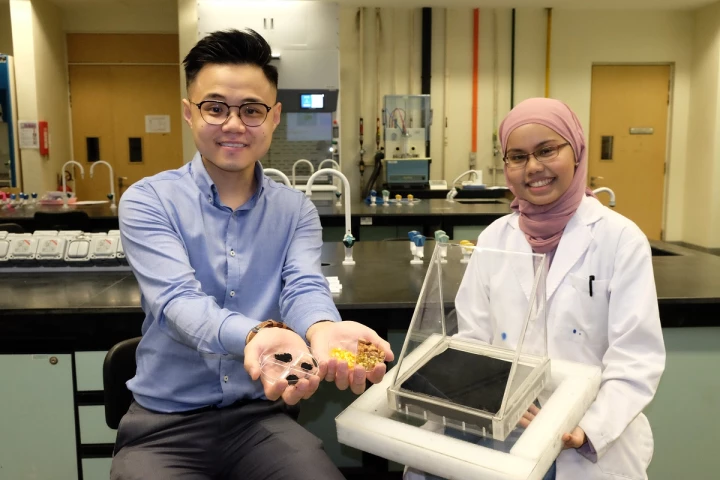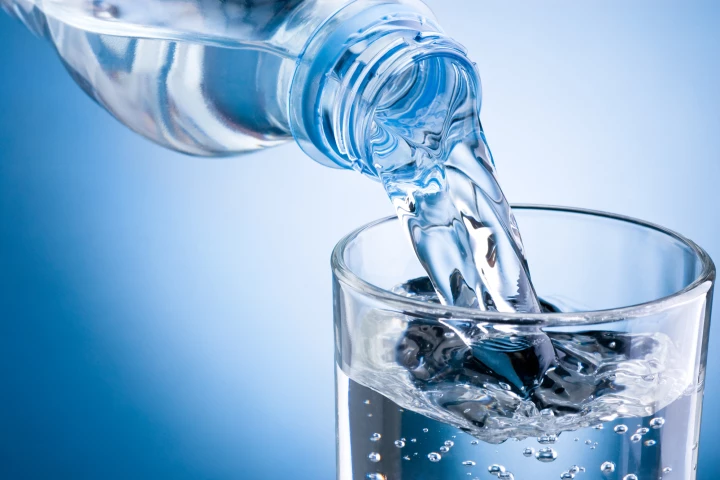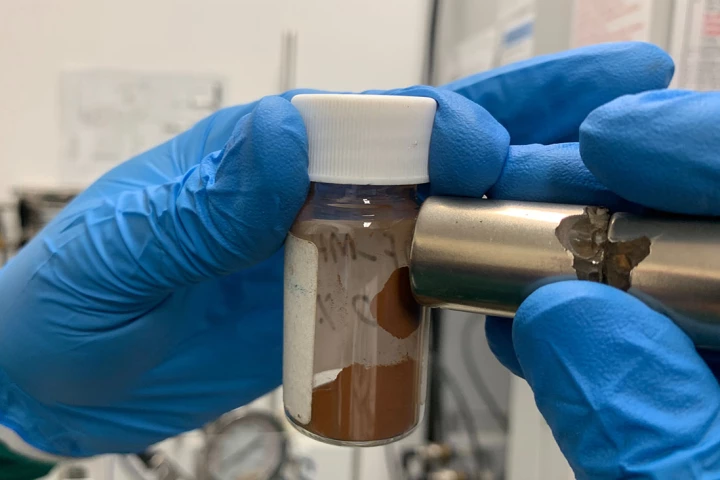Purification
-
In a highly unexpected approach to renewable energy, researchers in Korea have developed a low-cost, easily-manufactured advanced membrane that actually generates electricity as it turns wastewater, seawater or groundwater into drinking water.
-
Solar stills provide a clever and simple means of purifying dirty or salty water, but they work at a rather slow rate. A new material has been shown to boost their performance, and it's made from fruit waste which would otherwise be discarded.
-
Although we've seen a number of systems that use sunlight to purify tainted water, their output is often quite limited. A new loofah-inspired hydrogel, however, uses sunlight to treat much more water in one go … enough to meet a person's daily needs.
-
Scientists in Australia have developed an intriguing new technique for removing toxic “forever chemicals” from water. Adding a solution to contaminated water coats the pollutants and makes them magnetic, so they can easily be attracted and isolated.
-
Microplastics are a growing environmental problem, but now researchers in Korea have developed a new water purification system that can filter out these tiny fragments, as well as other pollutants, very quickly and with high efficiency.
-
PFAS are insidious pollutants thanks to their ubiquity, long life and a growing list of linked health concerns. But now researchers at UC Riverside have developed a new method to break them down more effectively, using hydrogen and UV light.
-
While the purification of wastewater once just involved the removal of traditional pollutants, it now also entails the removal of microplastics. A new powder reportedly does the job much quicker and more thoroughly than has previously been possible.
-
In wastewater produced by the textile industry and others, dye is one of the primary pollutants. A newly developed synthetic polymer is capable of removing that dye from the water, plus it can be cleaned up and reused to treat more wastewater.
-
When cooking oil is extracted from peanuts and sunflower seeds, a waste product known as oilseed meal is left behind. New research shows that proteins harvested from that meal can be used to filter heavy metals out of contaminated water.
-
Although there are already portable systems that create drinking water by desalinating and purifying seawater, they typically utilize filters that have to be replaced. A new MIT setup, however, just requires a small amount of electricity.
-
There are many parts of the world in which fresh water may be plentiful, but it's also full of harmful microbes. An experimental new filter is able to purify such water for drinking, and it's powered solely by sunlight.
-
In order to purify wastewater, chemicals and UV light are commonly used. According to a new study, however, algae may be a more eco-friendly and energy-efficient alternative, resulting in water that's clean enough for use in aquaculture.
Load More











